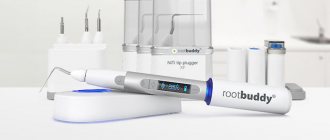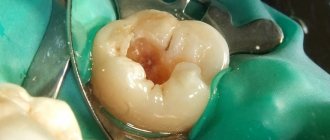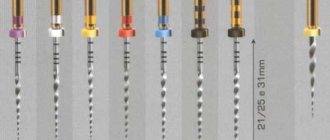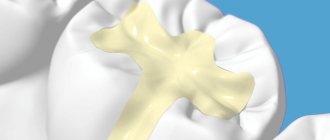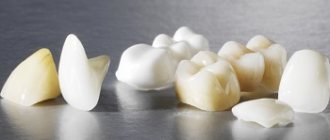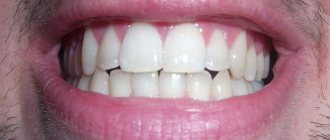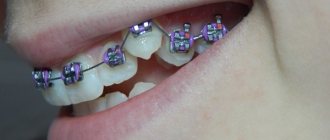Dental canal filling is the sealing of dental canals after pulp removal. Filling is carried out to block the access of infection to the area of the dental root canals and strengthen the tooth. At the moment, there are several ways to fill tooth canals, and each of them has its own positive and negative aspects.
In the recent past, in Russia, dental canals were filled by filling them with a special paste-like composition. This technique is quite fast and easy to implement, and is notable for its low cost.
Despite this, not every composition has the required degree of fluidity to thoroughly seal each microscopic opening of the dental canals. Among other things, pastes can form voids, and they are characterized by resorption and shrinkage, which can lead to depressurization of the dental canals and a subsequent inflammatory process. Another significant drawback of the technique is the possibility of allergic reactions. The excess of the disadvantages over the advantages of the technique led to the creation of more effective modern methods.
Depophoresis
Modern methods of filling dental canals cannot guarantee the tightness of a dental filling. This is why the depophoresis method is so in demand, which involves sterilizing the dental canals to eliminate infection using a special device.
This method is not exactly a method of filling dental canals, since it is often carried out even on already filled teeth. During depophoresis, a specialist injects calcium and copper hydroxide into the dental canals to completely sterilize them even in hard-to-reach areas and prevent infections. Depophoresis is quite expensive, but allows you to preserve even a pulpless tooth for a long time.
Obturation of canals with the Thermofil system
Thermophile is a special carrier made of plastic and gutta-percha. Obturation of the root canals of a tooth with the Thermofil system involves filling the main canal of the tooth root and lateral canals. During obturation, the specialist introduces a certain amount of sealer into the tooth canal to ensure high-quality contact with the surface and glide. After this, the plastic rod is heated, inserted into the dental canal, and then cut. Gutta-percha ensures sealing of the canal by penetrating into each cavity. The Thermofil system is reliable, it is quick and simple, but the filling material may extend beyond the dental canal, which will lead to irritation.
Thermafil system
Polymer materials containing calcium hydroxide
These preparations are 50-55% aqueous suspensions of calcium hydroxide. Due to the highly alkaline reaction, calcium hydroxide, when filled into the root canal, has a bactericidal effect, destroys necrotic tissue, and stimulates osteo-, dentin-, and cementogenesis.
The use of non-hardening pastes based on calcium hydroxide is indicated as a temporary intracanal drug in the treatment of destructive forms of periodontitis, cystogranulomas and radicular cysts. In case of destructive forms, it is recommended to remove the paste beyond the apex. The tooth is covered with an airtight bandage.
Another area of application of calcium hydroxide is antiseptic treatment of root canals. A one-time temporary filling of the canal is carried out with this paste. The tooth is covered with an airtight bandage. After 2-3 days, the canal is cleaned and sealed with a permanent hardening material.
Calcium hydroxide is inactivated upon contact with carbon dioxide in the air, so during storage the syringe with the drug must be hermetically sealed with a special stopper.
We invite you to read: A lump has appeared on the gum - the reasons for the formation of a white, hard lump on the gum near the tooth
Drugs in this group are polymer compounds with the addition of calcium hydroxide. They are available as a paste/paste system (basic and catalytic). In addition, it contains non-steroidal anti-inflammatory drugs and a radiopaque filler. Curing time in the root canal is from 16 to 24 hours depending on humidity. Materials of this group should be used only in combination with primary hard materials – gutta-percha points, thermofils, etc.
Polymer sealants containing calcium hydroxide have approximately the same positive and negative properties as those based on epoxy resins.
- the ability to stimulate the processes of reparative regeneration in periodontal tissues due to the therapeutic effect of calcium hydroxide;
- the presence of non-steroidal anti-inflammatory drugs in the material reduces the risk of post-filling pain (reaction to filling")
-the absence of epoxy resins in the composition of these endosealants makes it relatively easy to unseal the canal if “over-treatment” is necessary.
Filling with cold gutta-percha
Single pin method
The essence of this method is to shape the canal in accordance with the selected pin. After this, the pin is installed by a specialist in a previously prepared tooth, and then trimmed. It is important to ensure that the pin fits as tightly as possible to the walls of the dental canal. The method has imperfections, but is preferable to filling with paste.
Lateral condensation method
The method has been used for a long period of time; it is quite simple, but at the same time reliable and effective. During lateral condensation, the tooth canal is tightly filled with gutta-percha pins, which are treated with a sealer that quickly hardens. The insertion begins with the central pin and ends with thin side pins, after which the material is carefully compacted. This method can lead to inflammation due to the heterogeneity of the material in the dental canal; in addition, a fracture of the tooth root is possible.
Thermo-mechanical condensation of gutta-percha
This method has a second name – sealing with a rotating condenser. Currently, it is practically not used due to the impossibility of sealing all channel cavities. Among other things, the use of a rotating instrument implies a risk of breaking it inside the dental canal.
Filling with chemically softened gutta-percha
This method is not currently used. This is due to the fact that after the evaporation of chemical solvents, serious deformation of the material occurs with shrinkage of the filling.
Filling with heated gutta-percha
Gutta-percha injection method
This method involves feeding gutta-percha into the tooth canals in a liquid state, heated to high temperatures. This allows the material to penetrate the central canal and all its areas for a thorough seal without damaging the tissue. The method is distinguished by its quality and efficiency, but requires high professionalism of a specialist.
Filling with heated gutta-percha
Gutta-percha vertical condensation method
This method is quite complicated and time-consuming. During the vertical condensation of gutta-percha, a filling material is first installed in the dental canal, distributed along the lateral canals using special instruments. After this, the specialist installs the softened pin. This ensures a highly effective method with minimal use of sealer and maximum use of gutta-percha.
Continuous wave method
The continuous wave method is similar to vertical condensation of gutta-percha, but it is simpler. It involves first introducing a central pin, and then lateral pins of a similar size. Manipulations are performed with a heated instrument until complete sealing is achieved.
Method of administering gutta-percha using a syringe
The method of syringe injection of gutta-percha has a second name - the method of thermoplastic injection. During the method, a specialist injects molten gutta-percha into the dental canal using a special syringe. The method is simple, quick and convenient, but gutta-percha does not always fill the lateral canals and often does not reach the top of the dental canal.
E&Q Plus system
This method involves a combination of several methods of filling dental canals and is currently considered the best option. During filling using this method, gutta-percha is placed in the tooth canal, after which the specialist heats it directly in the canal using a special tool - a tip with attachments. The heated material is carefully compacted, resulting in high-quality filling of all channels. After installing the main pin, subsequent filling is performed using an injection gun.
Resorcinol-formalin mixture
The method is currently used extremely rarely due to its toxic and carcinogenic effects on the body, as well as due to the staining of teeth in a pinkish tint. Such filling leads to complications in 75% of cases. Using this method, the dental canal is etched and filled with a paste containing resorcinol-formalin and zinc oxide.
Lateral condensation method
This is the most common method of filling a root canal.
The method can be applied in many situations. However, it has its own contraindications: narrow curved canals, pronounced disturbances in the shape of the canals, including iatrogenic ones (formation of an artificial notch in the canal). These contraindications are traditional. In addition to them, a contraindication is a destroyed apical constriction, including an open apex. However, lateral condensation can be modified or combined with other obturation techniques.
Advantages of the method: it does not require complex additional equipment, the method is quite simple to perform. In most clinical situations, the level of apical filling is clearly controlled in the presence of an apical stop.
Execution method
There are variations in the execution of the method. We present the most common one. To perform the method, you need a set of standard gutta-percha pins, spreaders and pluggers. The selection and testing of spreaders is carried out at the stage of instrumental processing of the channel.
The choice of base pin is determined by the size of the final file. Since the main, or master pin, corresponds to the apical part of the canal only within 1 mm (meaning that the preparation was carried out using expanding methods), the overlying parts of the canal do not correspond to its size. After checking the position of the main pin, it is removed from the channel, its length is checked on the measuring device and adjusted if it does not match completely. The correct position is assessed on an x-ray.
Although there are many options for introducing a sealer into the root canal, it should be noted that the use of a canal filler is limited to cases where an apical stop has been created. The sealer can be injected using a K-file, spreader, or paper point. After introducing the sealer, the main pin is slowly inserted into the canal, which helps remove the air plug to a specified length.
After installing the primary pin, special spreader instruments (long, conical with a sharp tip) are inserted into the canal. Using a rotating motion with light apical pressure, the instrument is advanced as far as possible, pressing the main pin against the canal wall. Gutta-percha is kept under pressure for about 15 seconds. It is believed that inserting the spreader at a distance 1 mm shorter than the working length ensures reliable compaction of the material in the apical part of the canal. Then the spreader is removed and an additional pin is inserted to the length formed by the spreader. The additional pin should be the same shape and size as the spreader or may be slightly smaller for easier insertion into the resulting space. This procedure is repeated until the spreader can be advanced into the channel. (The pin is inserted last, not the spreader). Remains of gutta-percha are removed with a hot instrument at the level of the root canal orifices or slightly lower, especially in the anterior teeth.
In water-rooted teeth, the filling material must be removed to the level of the cemento-enamel junction, since many root cements can stain the dentin and cause discoloration of the tooth.
In multi-rooted teeth, the floor of the pulp chamber is covered with root cement and heated gutta-percha, closing the convexity of the furcation to seal any additional canals. The remaining part of the pulp chamber is filled with a light, well-sealing, preferably with adhesion to dentin, base material (polycarboxylate or glassionomer cement). Saliva contact with a root filling significantly reduces the quality of the seal (Swanson and Madison, 1987; Madison and Wilcox, 1988).
With the lateral compaction method (lateral condensation), the best results are achieved when the spreader is inserted after the primary pin 1 mm shorter than the working length, and the number of pressing movements does not affect the quality (Hattone et al., 1988). The smoothly tapering shape of the prepared canal treated with the StepBack technique creates the best conditions necessary for deep advancement of the pin and spreader.
The disadvantage of the lateral compaction method is that the root filling is not homogeneous, but the pins fit tightly together and are connected with cement. Despite criticism, this method has been used successfully for many years and is a clinical improvement on the single pin method.
The use of the method of lateral condensation of gutta-percha with a partially destroyed apical constriction or a formed apical narrowing is accompanied by a lower risk of refilling beyond the planned level, however, this method does not allow for reliable sealing of the apical foramen.
The use of vertical condensation methods of gutta-percha, which allows for dense occlusion of the apex, is nevertheless accompanied by the risk of material being removed into the periodontium. Therefore, when choosing a method for filling a root canal, it is necessary to take these possible problems into account. Various methods have been proposed to solve this situation. In particular, the option of lateral condensation with ultrasonic activation of the spreader. With this technique, the spreader is placed next to the master pin and activated by ultrasound without water cooling (Zmener O., Banegas G., 1999), which reduces excess pressure in the apical part of the canal.
Another method is to modify lateral condensation methods by heating or chemically softening the tip of the gutta-percha master point. The goal is to create the best conditions for apical sealing without the risk of material being pushed past the root apex. Basically, this method has two indications: the absence of an apical “stop” or its presence, but the apical part of the canal is very large and/or irregular in shape. The main pin is selected so that it is 2-4 mm shorter than the working length, the apical tip of the pin (3-4 mm) is softened in chloroform for 1-2 seconds. The pin is inserted several times into the canal until it stops and removed from it, followed by softening in chloroform. Once the working length of the canal is reached, the position of the pin is fixed. We emphasize that the working length of the canal in this case is determined by the level of the radiographic root apex. The prepared cone should have guidelines that will allow the pin to be inserted in the same prepared position. This is achieved, for example, by bending the pin in a certain direction. The pin modified in this way is removed from the channel, since the solvent must evaporate. The cone should not remain softened in the canal. Essentially, the tip of the pin should be an impression of the apical part of the canal. Cementation of the pin is carried out by applying sealer to the apical third of it without first introducing the material into the canal. Then you can carry out the standard lateral compaction technique or combine it with hot condensation methods.
Cold lateral condensation of gutta-percha is currently the most common technique for root canal obturation. However, some authors indicate that lateral condensation does not ensure homogeneity of gutta-percha.
